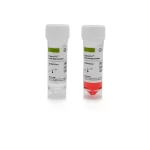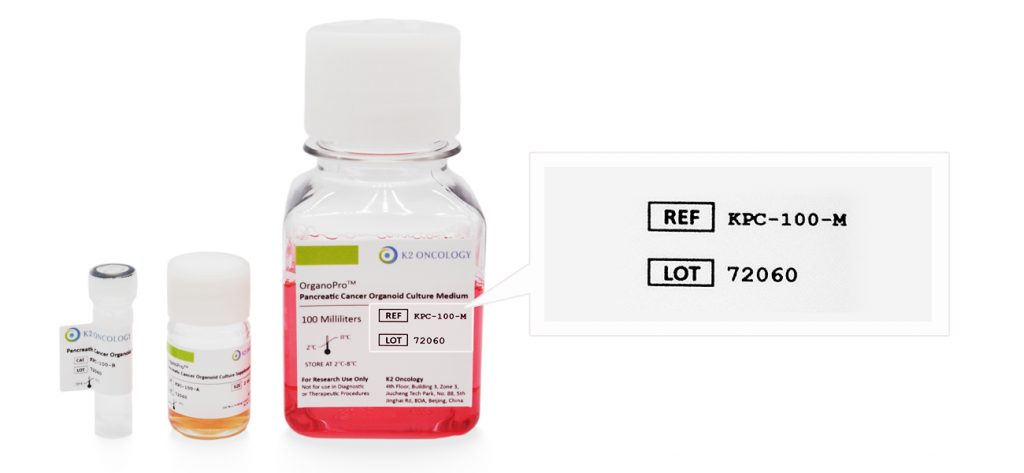
-

手术组织样本保存液套装
K2O-PFO-S
-

手术组织样本保存液套装
K2O-PFO-M


OrganoPro™手术组织样本保存液套装
K2O-PFO-S 包含以下产品
- OrganoPro™ 手术组织样本保存液 1kit(适用一个样本)
K2O-PFO-M 包含以下产品
- OrganoPro™ 手术组织样本保存液 5kit(适用五个样本)

我们的科学家向您推荐
我们的产品简化了实验流程,集成多种因子,无需单独优化,扩增潜力高,14天内细胞数量可达到1×10^6。适用于多种培养形式,包括基质胶、低吸附孔板和生物反应器悬浮培养。GMP级别生产条件下制备,批次质量稳定,试剂含量是常规市售干细胞培养基的2倍,实现极佳的成本效益比。让复杂的培养变得简单快速,让科研变得更高效。
概览
OrganoPro™ 手术组织保存液套装是一种优化的即用型组织低温(2-8℃)保存剂,可用于短时间内离体组织的保存/运输。
套装中的手术组织清洗液包含了较高浓度的抗生素混合物,可以有效降低样本细菌和真菌污染的风险。套装中的手术组织保存液可以有效的降低运输过程中细胞的活化、凋亡和坏死,维持细胞基本的生理代谢,保持组织具有较高的细胞活性。
本产品在2°C-8°C 低温运输条件下可维持组织样本细胞的活力长达60小时,本产品已在多种器官原代组织建立类器官模型的应用中得到了充分的使用和验证。
产品组成:
| 产品名称 | 货号 | 规格 | 储存温度 | 保质期 |
|---|---|---|---|---|
| OrganoPro™ 手术组织样本清洗液 | K2O-PFO-A | 10ml | 2-8°C | 1个月 |
| OrganoPro™ 手术组织样本保存液 | K2O-PFO-B | 10ml | 2-8°C | 1个月 |
类型
组织样本保存液
适用细胞
组织/细胞
物种
人类/其他物种
应用
适用于样本的短时间保存
商标
OrganoPro™
产品使用说明及支持信息
在产品文档中查找支持信息和使用说明,或在下方探索更多
| 文档类型 | 产品名称 | Catalog # |
|---|---|---|
| User manual | OrganoPro™手术组织样本保存液套装 | K2O-PFO-S K2O-PFO-M |
资源及文献引用
相关资源及文献引用
Organoid drug screening report for a non-small cell lung cancer patient with EGFR gene mutation negativity: A case report and review of the literature
Pan, Yuetian, Hongshang Cui, and Yongbin Song | Frontiers in Oncology (2023)
Abstract:
Patients with non-small cell lung cancer (NSCLC) who carry epidermal growth factor receptor (EGFR) mutations can benefit significantly from EGFR tyrosine kinase inhibitors (EGFR TKIs). However, it is unclear whether patients without EGFR mutations cannot benefit from these drugs. Patient-derived tumor organoids (PDOs) are reliable in vitro tumor models that can be used in drug screening. In this paper, we report an Asian female NSCLC patient without EGFR mutation. Her tumor biopsy specimen was used to establish PDOs. The treatment effect was significantly improved by anti-tumor therapy guided by organoid drug screening. Read More: https://doi.org/10.3389/fonc.2023.1109274Identification of solamargine as a cisplatin sensitizer through phenotypical screening in cisplatin-resistant NSCLC organoids
Han, Yi,et al. | Frontiers in Pharmacology (2022)
Abstract:
Although Cisplatin (DDP) is a widely used first-line chemotherapy medication, DDP resistance is one of the main causes of treatment failure in advanced lung cancer. Therefore, it is urgent to identify DDP sensitizers and investigate the underlying molecular mechanisms. Here we utilized DDP-resistant organoids established from tumor biopsies of patients with relapsed lung cancers. In this study, we identified Solamargine as a potential DDP sensitizer through screening a natural product library. Mechanically, Solamargine induced G0/G1-phase arrest and apoptosis in DDP-resistant lung cancer cell lines. Gene expression analysis and KEGG pathway analysis indicated that the hedgehog pathway was suppressed by Solamargine. Moreover, Gli responsive element (GRE) reporter gene assay and BODIPY-cyclopamine binding assay showed that Solamargine inhibited the hedgehog pathway via direct binding to SMO protein. Interestingly, Solamargine and DDP showed a synergetic effect in inhibiting DDP-resistant lung cancer cell lines. Taken together, our work herein revealed Solamargine as a hedgehog pathway inhibitor and DDP-sensitizer, which might provide a new direction for further treatment of advanced DDP-resistant lung cancer patients. Read More: https://doi.org/10.3389/fphar.2022.802168An Artemisinin Derivative ART1 Induces Ferroptosis by Targeting the HSD17B4 Protein Essential for Lipid Metabolism and Directly Inducing Lipid Peroxidation.
Xie, Jingjing, et al. | CCS Chemistry (2022)
Abstract:
Artemisinin and its derivatives, commonly known as antimalarial drugs, have gradually come to be regarded as potential antitumor agents, although their cytotoxic efficacy and mechanisms of action remain to be settled. Herein, we report that an artemisinin analog, ART1, can potently induce ferroptosis in a subset of cancer cell lines. Structure–activity relationship (SAR) analysis reveals that both the endoperoxide moiety and the artemisinin skeleton are required for the antitumor activity of ART1. Aided with ART1-based small-molecule tools, chemical proteomic analysis identified the HSD17B4 protein as a direct target of ART1. HSD17B4 resides in peroxisomes and is an essential enzyme in the catabolism of very-long-chain fatty acids. Our results demonstrate that ART1 initiates ferroptosis through selective oxidation of the fatty acids in peroxisomes by hijacking the HSD17B4 protein without disturbing its enzymatic function, providing a promising mechanism to develop therapeutics for cancer treatment. Read More: https://doi.org/10.31635/ccschem.021.202000691Pyrotinib in patients with HER2-amplified advanced non–small cell lung cancer: A prospective, multicenter, single-arm trial
Song, Zhengbo,et al. | Clinical Cancer Research (2022)
Abstract:
Glutamine synthetase licenses APC/C-mediated mitotic progression to drive cell growth
Zhao, Jiang-Sha,et al. | Nature Metabolism (2022)
Abstract:
Tumors can reprogram the functions of metabolic enzymes to fuel malignant growth; however, beyond their conventional functions, key metabolic enzymes have not been found to directly govern cell mitosis. Here, we report that glutamine synthetase (GS) promotes cell proliferation by licensing mitotic progression independently of its metabolic function. GS depletion, but not impairment of its enzymatic activity, results in mitotic arrest and multinucleation across multiple lung and liver cancer cell lines, patient-derived organoids and xenografted tumors. Mechanistically, GS directly interacts with the nuclear pore protein NUP88 to prevent its binding to CDC20. Such interaction licenses activation of the CDC20-mediated anaphase-promoting complex or cyclosome to ensure proper metaphase-to-anaphase transition. In addition, GS is overexpressed in human non-small cell lung cancer and its depletion reduces tumor growth in mice and increases the efficacy of microtubule-targeted chemotherapy. Our findings highlight a moonlighting function of GS in governing mitosis and illustrate how an essential metabolic enzyme promotes cell proliferation and tumor development, beyond its main metabolic function.
Halofuginone sensitizes lung cancer organoids to cisplatin via suppressing PI3K/AKT and MAPK signaling pathways
Li, Hefei,et al. | Frontiers in Cell and Developmental Biology (2021)
Abstract:
Lung cancer is the leading cause of cancer death worldwide. Cisplatin is the major DNA-damaging anticancer drug that cross-links the DNA in cancer cells, but many patients inevitably develop resistance with treatment. Identification of a cisplatin sensitizer might postpone or even reverse the development of cisplatin resistance. Halofuginone (HF), a natural small molecule isolated from Dichroa febrifuga, has been found to play an antitumor role. In this study, we found that HF inhibited the proliferation, induced G0/G1 phase arrest, and promoted apoptosis in lung cancer cells in a dose-dependent manner. To explore the underlying mechanism of this antitumor effect of halofuginone, we performed RNA sequencing to profile transcriptomes of NSCLC cells treated with or without halofuginone. Gene expression profiling and KEGG analysis indicated that PI3K/AKT and MAPK signaling pathways were top-ranked pathways affected by halofuginone. Moreover, combination of cisplatin and HF revealed that HF could sensitize the cisplatin-resistant patient-derived lung cancer organoids and lung cancer cells to cisplatin treatment. Taken together, this study identified HF as a cisplatin sensitizer and a dual pathway inhibitor, which might provide a new strategy to improve prognosis of patients with cisplatin-resistant lung cancer.
暂无文献引用
COA查询
根据货号和批次号,在线查询已购买产品的COA证书
产品货号和产品批号均显示在产品标签上对应位置(如右侧示意图所示)

Ref/Cat#
产品货号,每个产品对应的独立货号
Lot#
批次编号,同一产品不同批次会有不同批号,请您在产品包装找到对应批号



